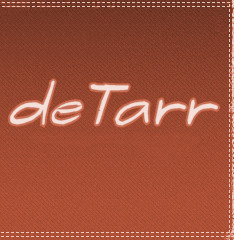Christine de Tarr (sculptor)

There is an irresistible urge that one feels when one sees a sculpture of Christine De Tarr and that is to caress it—finding a sensual pleasure in the tactile delight that her often voluptuous sculptures exude. Christine’s work is human. She loves her work and the lasting impression of the beauty or strength of her work communicates to the intellect as well as to the senses. This is the portrayal of human feelings whether it is a small study or a larger figure.
When you look into the cultural background of this sculptor you find that it is no coincidence that there should be such rich roots to her work. Born in Pisa, the home of the family of sculptors Pisano, with their impressive solid forms, so much admired by Henry Moore; she was brought up partially in Paris where as a child she played in the gardens of Rodin museum—looking up at his sculpture and demanding to be taken inside, once again, to see more. Rodin was an early influence upon this sculptor.
As an older child, in Thailand, she saw the immense statues of Buddha and learnt the value of a religious face-to-face relationship with a statue. She learnt the importance of horizontal or vertical forms, of messages sent from stone to human heart and intellect. Look at her “The Pause” and the stress slowly seeps away. Look at “Foetal” and you feel warmer and protected. There is something magic in the works of Christine—an emotion that passes easily from the sculpture to the viewer. Is it an energy instilled by her hands into the heart of her sculpture which conveys this powerful sentiment?
For as a world traveler, Christine de Tarr, has absorbed much from many cultures and studying them has transformed these influences into her own, very personal, works. She has looked intently at our bodies and into our faces and she shows now what she sees and feels. Her more dramatic male figures are sometimes bound by invisible chains, some feminine figures have a serene existence which shows in the simple curves of many of her sculptures—characters I was about to write—because each sculpture does indeed reflect a character, a person that we feel we know or could know.
So Christine is a figurative sculptor in the fullest sense. She passed through an abstract period as a painter, which has, perhaps, given her forms a stricter composition. In this exhibition, where she shows all her latest works, the figuration, the XXI century figuration that it shows, will delight all those who collect her works so assiduously. Unlike so many contemporary sculptors who repeat themselves ad nauseam, each of Christine de Tarr’s works is an individual piece—even one could say a poem—which is worked out with infinite love.
Click here to see video presentation of the artist.
Click here to read more about Christine de Tarr at the Galerie Art Montparnasse.
